Als u een harde schijf, SSD of USB apparaat heeft en deze tussen verschillende besturingssysteem wilt gebruiken, dan is het bestandssysteem ExFAT aanbevolen.
Wat is Exfat?
Exfat betekent Extended File Allocation Table. Het is een bestandssysteem dat een verbeterde versie van FAT32 met minder beperkingen. Het grote voordeel is dat ExFAT zeer grote bestanden ondersteunt, wat ideaal is voor externe harde schijven en USB-flashdrives die u gebruikt voor het opslaan en overdragen van grote mediabestanden of gegevenscollecties. Exfat is daarnaast ontworpen met compatibiliteit in gedachten. Het werkt naadloos op verschillende platformen, van Windows en macOS tot diverse andere apparaten zoals digitale camera’s en smart-tv’s. Deze brede compatibiliteit maakt het een uitstekende keuze voor apparaten en media die u tussen verschillende systemen en apparaten wilt delen.
Exfat beperkingen
Hoewel Exfat hedendaags steeds meer voordelen heeft, zitten er ook enkele nadelen aan waar u rekening mee dient te houden. Zo is het mogelijk dat vooral oudere systemen geen ondersteuning hebben voor het Exfat bestandssysteem en Exfat dan ook niet herkennen. Ook kan het bij het gebruik van veel, vooral kleine bestanden, iets trager werken dan bijvoorbeeld het NTFS-bestandssysteem.
Meld u dan aan voor onze nieuwsbrief.
Exfat heeft ook geen geavanceerde beveiligings of herstelfuncties en biedt geen journaling voor integriteit van uw gegevens. Journaling is een functie van sommige bestandssystemen die de integriteit van de gegevens op de schijf helpt te behouden door veranderingen te registreren in een speciaal logboek (of “journal”) voordat ze daadwerkelijk op de schijf worden doorgevoerd. Dit proces zorgt ervoor dat, in het geval van een vastloper of stroomuitval, het bestandssysteem kan terugkeren naar een eerdere, consistente staat door de acties die in het journal zijn opgeslagen, opnieuw toe te passen of onvolledige acties ongedaan te maken. Dit vermindert de kans op gegevenscorruptie en maakt het systeem robuuster.
Harde schijf of USB formatteren naar ExFAT
Er zijn in Windows twee manieren om een apparaat naar Exfat te formatteren. De eerste is via de Windows Verkenner en de tweede is via een Opdrachtprompt.
Houd er rekening mee dat u eventuele bestanden op uw schijf of USB eerst opslaat op uw computer. Formatteren is een proces waarin alle data van het apparaat wordt gewist.
Via Windows Verkenner
Open de Windows Verkenner. Klik eerst op “Deze PC” vervolgens klikt met de rechtermuisknop op het apparaat dat u wilt formatteren als Exfat en kiest u “Formatteren”.
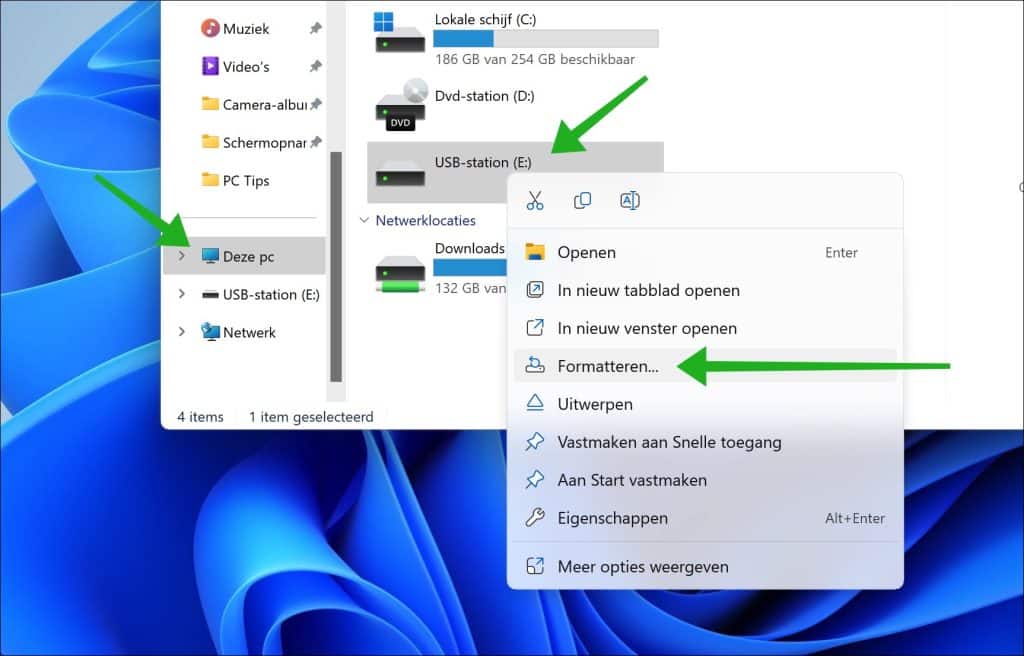
Selecteer bij “Bestandssysteem” het “exFAT” bestandssysteem. Geef vervolgens een duidelijke volumenaam in en schakel de optie “Snel formatteren” in. Klik op “Starten” als wilt beginnen met formatteren en dat u zeker bent dat alle data op dit apparaat mag worden gewist.
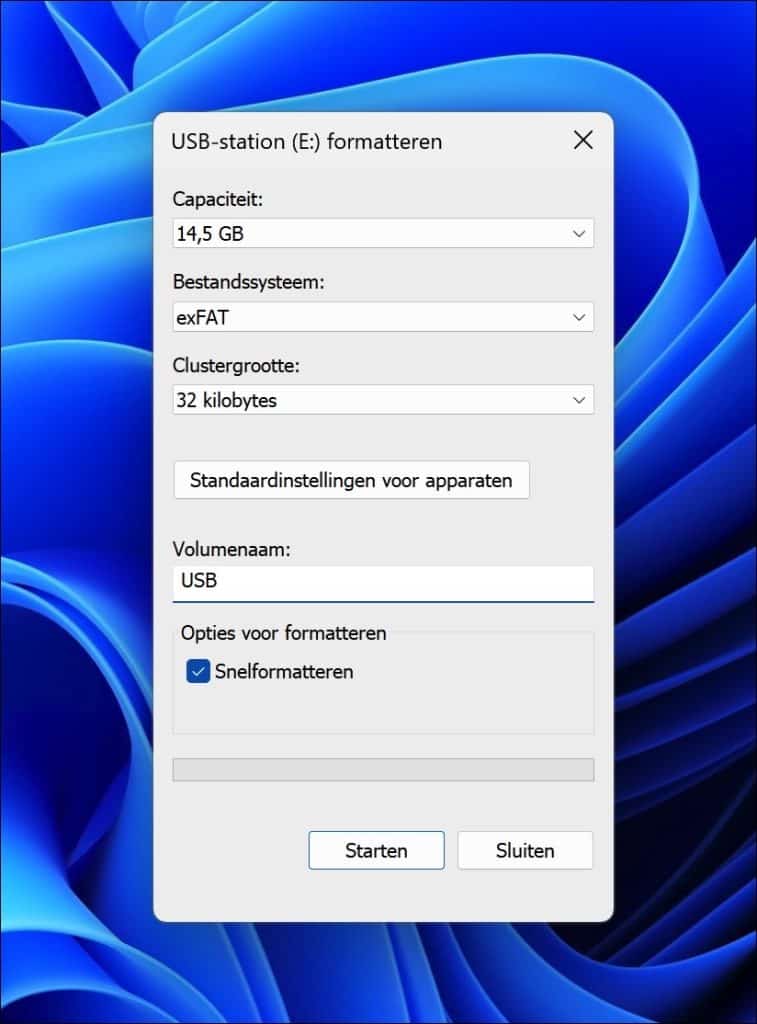
Als u deze schijf formatteert, zullen alle gegevens op de schijf verloren gaan. Klik op OK als u de schijf wilt formatteren of op Annuleren als u het formatteren wilt afbreken. Maak uw keuze.
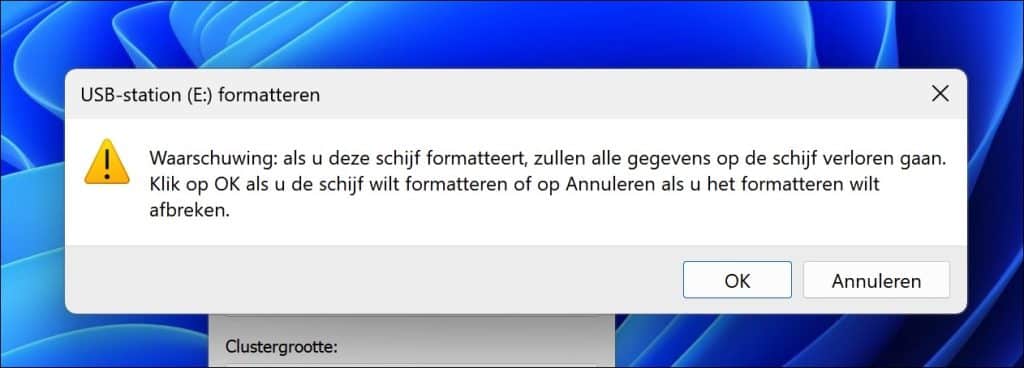
Als het apparaat naar Exfat is geformatteerd, dan ziet u de melding: Het formatteren is voltooid.
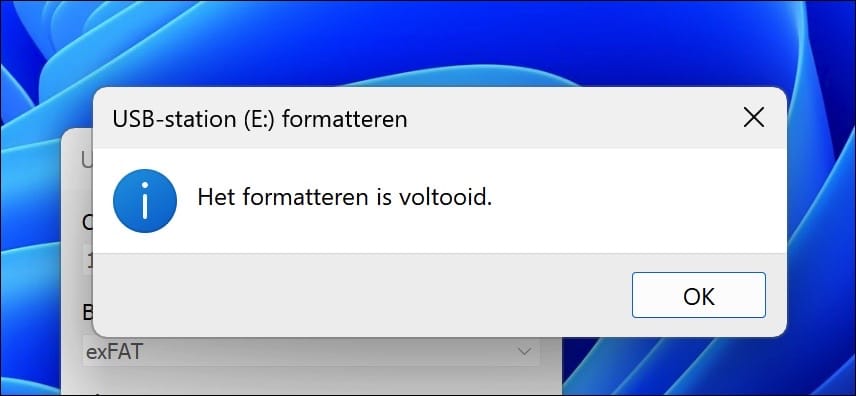
Optioneel: u kunt nu een schijfletter toewijzen aan de geformatteerde schijf of USB.
Via Opdrachtprompt
U kunt een schijf ook naar Exfat formatteren via een Opdrachtprompt. Dit is bijvoorbeeld aanbevolen als u beperkte toegang heeft tot de instellingen in Windows.
Om te beginnen open een Opdrachtprompt als administrator. Type vervolgens:
diskpart
Hiermee opent u diskpart. Het hulpmiddel om het apparaat mee te formatteren naar exfat.
Vervolgens typt u:
list disk
Hiermee vraagt u alle aangesloten schijven op aan uw computer.
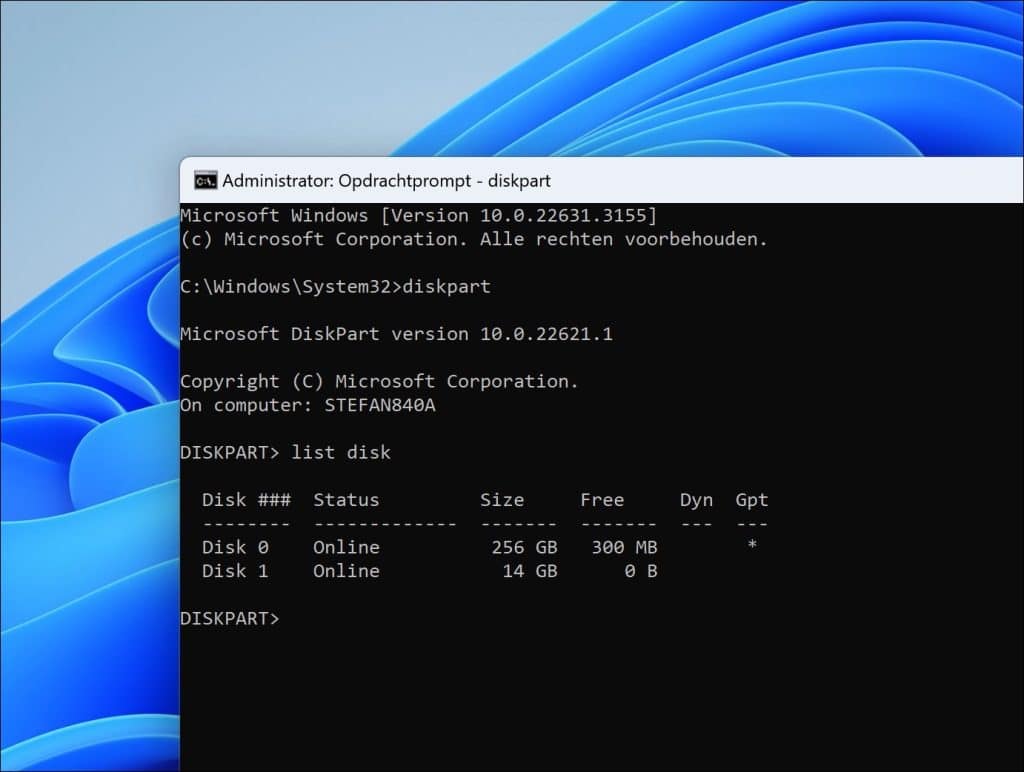
Type nu:
sel disk {nummer}
Hiermee selecteert u de schijf die u wilt formatteren. Vervang {nummer} door het nummer van de schijf. Controleer de correcte schijf onder andere door de grootte van de schijf in de uitvoer.
Optioneel: Als u alle partities op deze schijf wilt verwijderen, dan typt u:
clean
Hierna typt u:
create partition primary
hiermee maakt u een nieuwe enkele partitie aan op de schijf of USB.
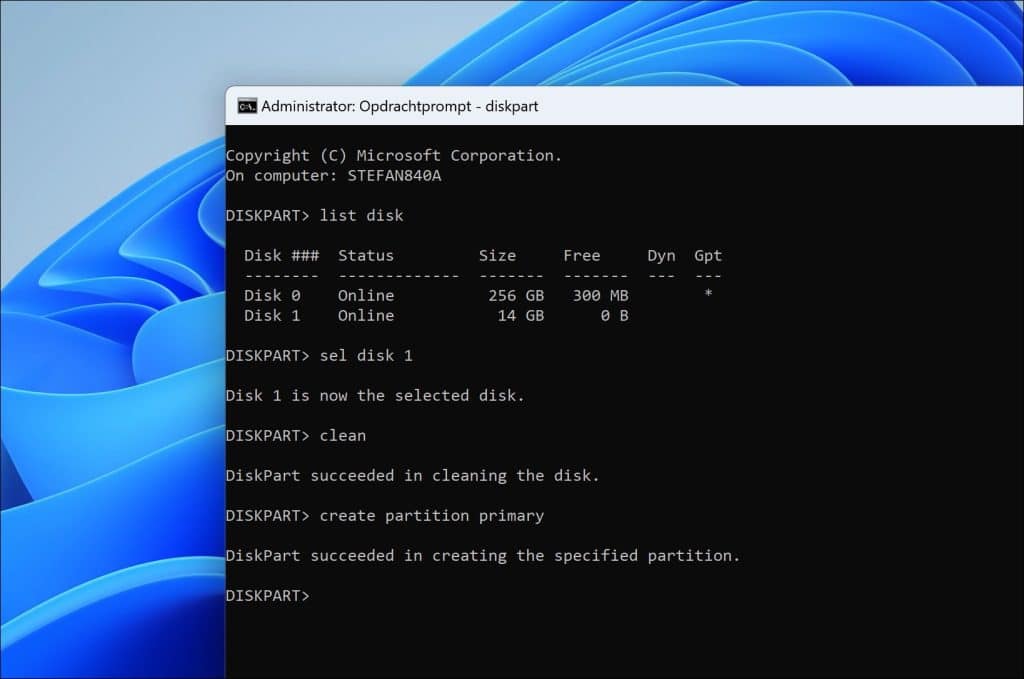
Als er maar een partitie is, dan typt u:
select partition 1
Hiermee stelt u de eerste en enige partitie op de schijf of USB.
Om nu de partitie te formatteren als Exfat, typt u:
format fs=exfat quick
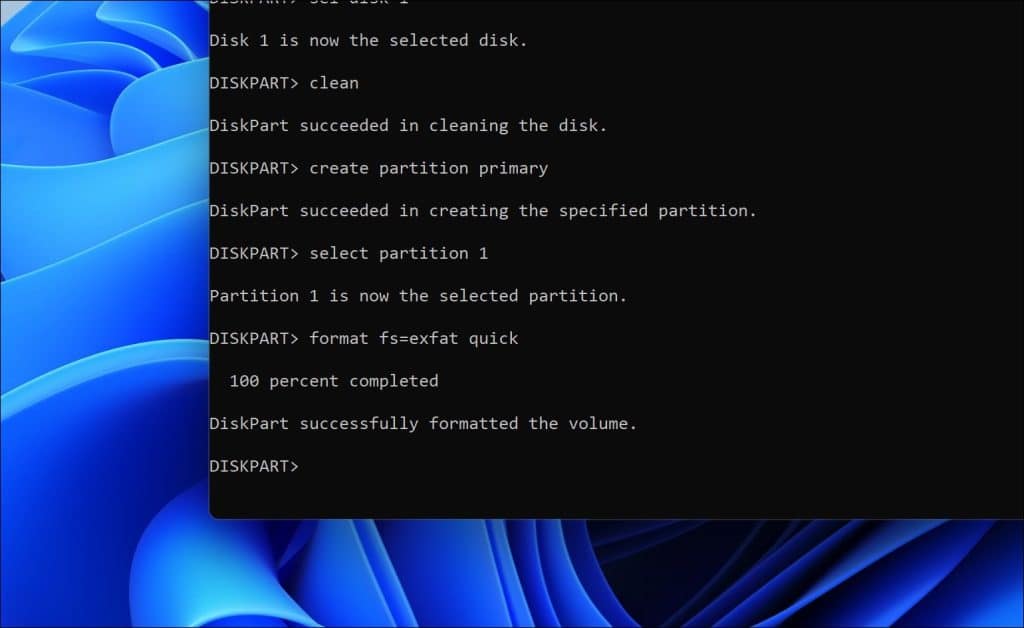
Als u de schijf of USB direct wilt gebruiken dan koppelt u een schijf letter aan het apparaat. Type hiervoor:
assign letter X
Vervang X door de gewenste schijfletter.
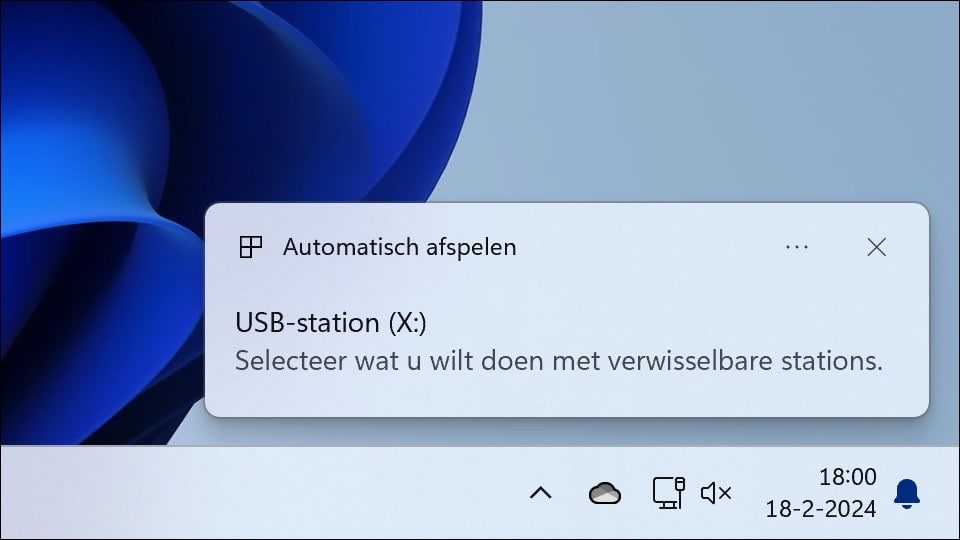
Type nu:
exit
Om diskpart af te sluiten.
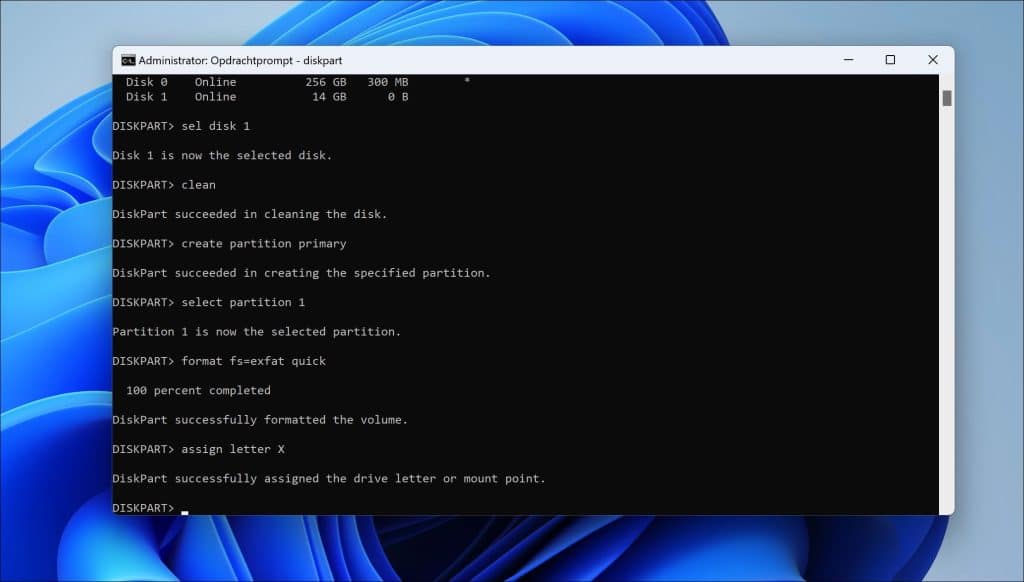
Ik hoop u hiermee geïnformeerd te hebben. Bedankt voor het lezen!
Gerelateerd: FAT32 naar NTFS converteren zonder data verlies.


Help mee
Mijn computertips zijn gratis en bedoeld om andere mensen te helpen. Door deze pc-tip te delen op een website of social media, helpt u mij meer mensen te bereiken.Overzicht met computertips
Bekijk ook mijn uitgebreide overzicht met praktische computertips, overzichtelijk gesorteerd per categorie.Computerhulp nodig?
Loopt u vast met uw pc, laptop of software? Stel uw vraag op ons computerforum en krijg gratis computerhulp van ervaren leden en experts.